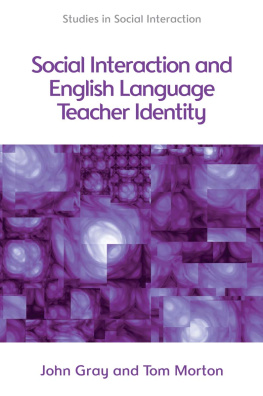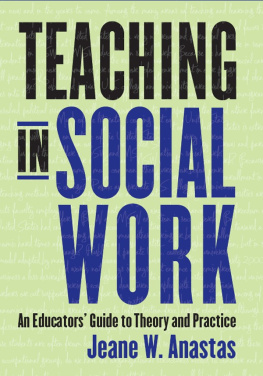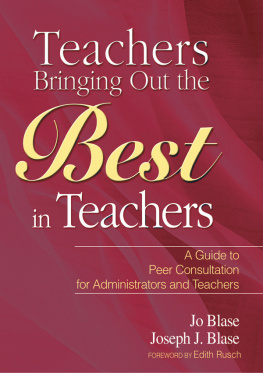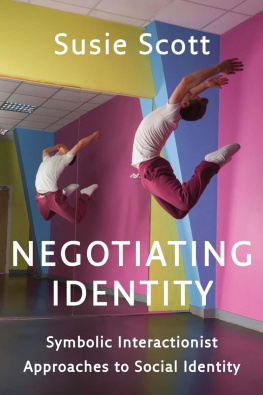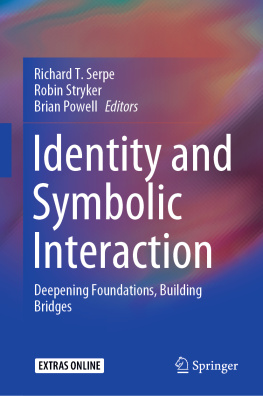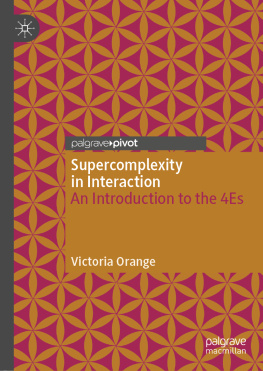
Social Interaction and English Language Teacher Identity
Studies in Social Interaction
Series Editors: Steve Walsh, Paul Seedhouse and Christopher Jenks
Presenting data from a range of social contexts including education, the media, the workplace, and professional development, the Studies in Social Interaction series uncovers, among other things, the ways in which tasks are accomplished, identities formed and communities established. Each volume in the series places social interaction at the centre of discussion and presents a clear overview of the work which has been done in a particular context. Books in the series provide examples of how data can be approached and used to uncover social-interaction themes and issues, and explore how research in social interaction can feed into a better understanding of professional practices and develop new research agendas. Through stimulating tasks and accompanying commentaries, readers are engaged and challenged to reflect on particular themes and relate the discussion to their own context.
Series Editors
Steve Walsh is Professor of Applied Linguistics at Newcastle University
Paul Seedhouse is Professor of Educational and Applied Linguistics at Newcastle University
Christopher Jenks is Assistant Professor of English and Intensive English/TESOL Coordinator at the University of South Dakota
Titles available in the series:
| Social Interaction in Second Language Chat Rooms | Christopher Jenks |
| Social Interaction and L2 Classroom Discourse | Olcay Sert |
| Social Interaction and Teacher Cognition | Li Li |
| Social Interaction and English Language Teacher Identity | John Gray and Tom Morton |
Visit the Studies in Social Interaction website at http://www.euppublishing.com/series/ssint
Social Interaction and English Language Teacher Identity
John Gray and Tom Morton

Edinburgh University Press is one of the leading university presses in the UK. We publish academic books and journals in our selected subject areas across the humanities and social sciences, combining cutting-edge scholarship with high editorial and production values to produce academic works of lasting importance. For more information visit our website: edinburghuniversitypress.com
John Gray and Tom Morton, 2018
Edinburgh University Press Ltd
The Tun Holyrood Road
12(2f) Jacksons Entry
Edinburgh EH8 8PJ
A CIP record for this book is available from the British Library
ISBN 978-0-7486-5614-1
The right of John Gray and Tom Morton to be identified as the authors of this work has been asserted in accordance with the Copyright, Designs and Patents Act 1988, and the Copyright and Related Rights Regulations 2003 (SI No. 2498).
CONTENTS
ACKNOWLEDGEMENTS
The gestation of this book has been lengthy. Weve discussed it for hours in Madrid, in our offices at Birkbeck and the UCL Institute of Education, over coffees in Gordon Square and lunches in Bloomsbury, on WhatsApp and via Skype for at least the last five years. Frustratingly, at various times our work commitments have taken us away from it and on occasion the project seemed to be on the verge of collapse. That didnt happen, thanks in large part to the constant encouragement of Steve Walsh and the patience of Edinburgh University Press as well as our own belief that there was a book to be written on English language teacher identity in which social interaction was foregrounded.
In addition to thanking Steve and Edinburgh University Press, we would also like to thank the numerous friends, colleagues and students who read chapters or parts of chapters and commented and made helpful suggestions Mike Baynham, David Block, Emma Brooks, Mel Cooke, Marnie Holborow, Chris Jenks, Miguel Prez-Milans, Tabitha Millett, John ORegan, Sian Preece, Olcay Sert, Will Simpson and Scott Thornbury. We are indebted to all of them. We would also like to thank the MA students who took the 201617 iteration of Johns module, Language Teacher Identity and Development, for their critical engagement with many of the chapters, as well as Bloodaxe Books for granting permission to reproduce the poem by Jackie Kay. A special thank you is reserved for David Block, who generously read all the chapters and acted as a critical friend throughout.
1
INTRODUCTION
In my country
walking by the waters,
down where an honest river
shakes hands with the sea,
a woman passed around me
in a slow, watchful circle,
as if I were a superstition;
or the worst dregs of her imagination,
so when she finally spoke
her words spliced into bars
of an old wheel. A segment of air.
Where do you come from?
Here, I said, Here. These parts.
Jackie Kay (1993)
THE RISE OF TEACHER IDENTITY
The Scottish poet Jackie Kay describes how she was moved to write these lines as a result of repeatedly being taken for a foreigner in her own country. As a black woman, her skin colour marked her out as someone who was frequently perceived as being alien, requiring her on occasion to give an account of herself to strangers. Such incidents are not uncommon in a globalised world (Zhu and Li 2016) where people who are phenotypically, culturally, ethnically and religiously different the list could go on are, if not living cheek by jowl, then at least coming into contact with one another, and frequently in settings where anxiety about foreigners and those perceived to be different is often prevalent. But such acts of identity (and for many scholars that is how Kays assertion is to be understood) are not only triggered by questions about where we are from but also they are part and parcel of living and working in highly bureaucratised societies where we are all repeatedly required to say who we are (Blommaert 2005; Joseph 2004). We do this in emails, on the telephone, at meetings, in job interviews, and in the many other kinds of interactions we engage in outside our working lives, where contextually relevant aspects of ourselves are signalled in a multitude of ways. Reflecting on this ongoing identity activity, Blommaert (2005: 204) states:
Such acts are of tremendous complexity, for they involve a wide variety of situating processes: situating the individual in relation to several layers of (real, sociological) groupness and (socially constructed) categories (age, category, sex, professional category, but also national, cultural, and ethnolinguistic categories), situating this complex in turn in relation to other such complexes (young versus old, male versus female, highly educated versus less educated, and so on), and situating this identification in relation to the situation at hand, making selections that result in relevant identity.
It is little wonder, then, that identity, as the superordinate term for all such activity in which we situate ourselves as certain kinds of people (both as individuals and as members of collectives) and the ways in which we position others (also individually and collectively) and are in turn positioned by them, has become a key term in a range of disciplines across the social sciences. This is evidenced by the proliferation of journal titles a small selection of which include African Identities
Next page
